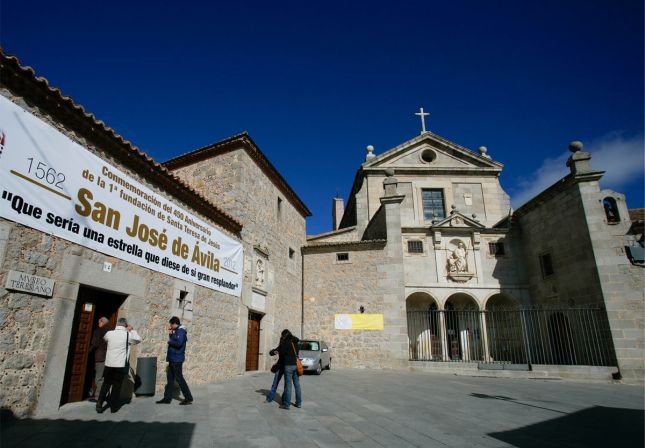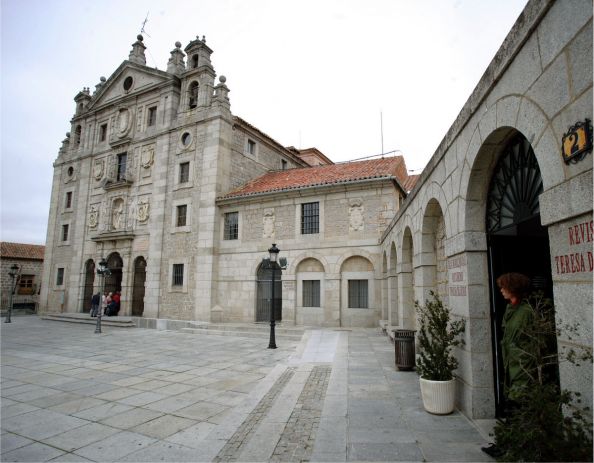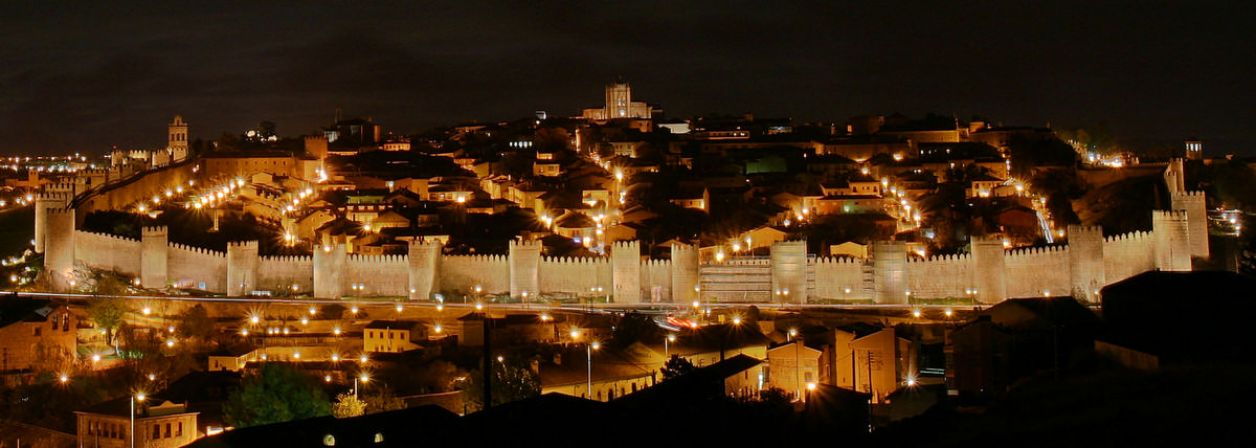Ávila
The lands of Ávila were home to some of the most outstanding pages in the history of the Jewish, Islamic and Christian mystic: Teresa de Cepeda y Ahumada, John of the Cross, Pedro de Alcántara, Mosé de León, Nissim Ben Abraham and El Mancebo de Arévalo; however, Ávila is above all the city of St Teresa of Jesus, one of the most exceptional figures of Spanish spirituality. It is the city of her childhood, youth and maturity, years of enthusiasm, projects, starting point and point of return of her foundations. Her life coincides with the city’s ‘golden age’.
We invite you to visit our streets and see in its emblematic places and architecture the life and concerns of this woman, who revolutionised the society of her day with her attitude and the reform of the Carmelite Order.
Teresian Places
Church and convent of St Teresa. House where Teresa of Ávila was born
The church, built on the house were Teresa was born, is part of the Carmelite convent. Below, the large vaulted burial crypt is today home to the Museum of St Teresa. Place of pilgrimage for thousands of people who worship the Saint.
Church of San Juan Bautista The baptism
In this church, of Romanesque origin, St Teresa was baptised on 4 April 1515. The ceremony took place in a font that has been conserved in the church.
The Four Pillars. The escape to Moorish lands.
This privileged vantage point over the walled city marks the construction of a small shrine to remember the place where Francisco de Cepeda, Teresa’s uncle, found the Saint and her brother Rodrigo when they were escaping to suffer martyrdom in Moorish lands.
Convent of Nuestra Señora de Gracia
This convent was founded in 1509 and belongs to the Order of St Augustin. It was where Alonso de Cepeda put his daughter Teresa against her will in 1531 to help her mature and study.
Monastery of La Encarnación
This was founded inside the city walls in 1478 and the Carmelite convent moved to the outskirts of the city in the 16th century. It is one of the essential places in the life of Teresa of Ávila, where she stayed almost constantly between 1535 and 5074. Here, she received counsel from important mystics and prepared the Carmelite Reform. The convent is home to a Museum of St Teresa.
Monastery of San José (Las Madres)
This was the Saint’s first foundation. It was founded on 24 August 1562. Four novices were ordained in the new Order of the Barefoot Carmelites of St Joseph. The convent represented the monastic ideal of Teresa of Ávila, characterised by its simplicity and austerity. It conserves the original convent rooms, which show what the first convent of the reform and the spirit of its sponsor were like.
Royal Monastery of Santo Tomás
The Chapel of El Santo Cristo de la Agonía conserves the confessional that was used by the Saint. This was where she had a vision in which the Madonna and St Joseph dressed her in a blue cloak and collar, a scene represented on the main altarpiece of the Church of La Santa.
Mystic Ávila
The only centre in Europe, its aim is to introduce visitors to the phenomenon of mysticism. It stands as a compendium of universal mysticism and is home to mystic works of art. It is a unique concept and its aim is to show the complexity and paradoxical simplicity of mysticism.
Municipal Tourist Office
Centro de Recepción de Visitantes (C.R.V.)
Avda. de Madrid, 39
05001 Ávila
920 35 00 00 – ext.370
Opening Times
Summer: Every day from 09:00 to 20:00.
Winter: Every day from 09:00 to 18:00.
Closed on 25 December, 1 and 6 January.



